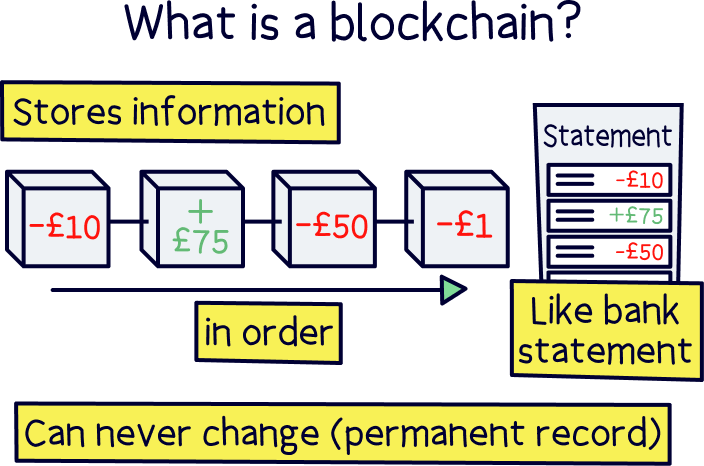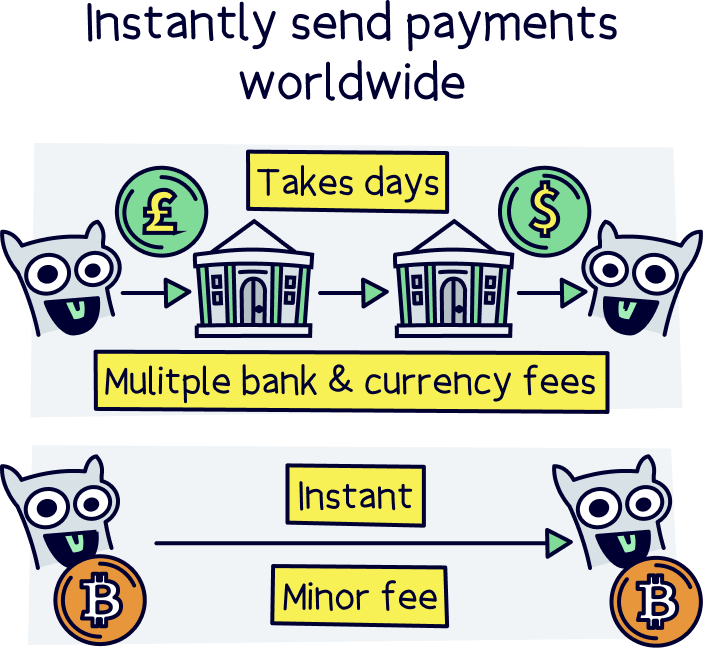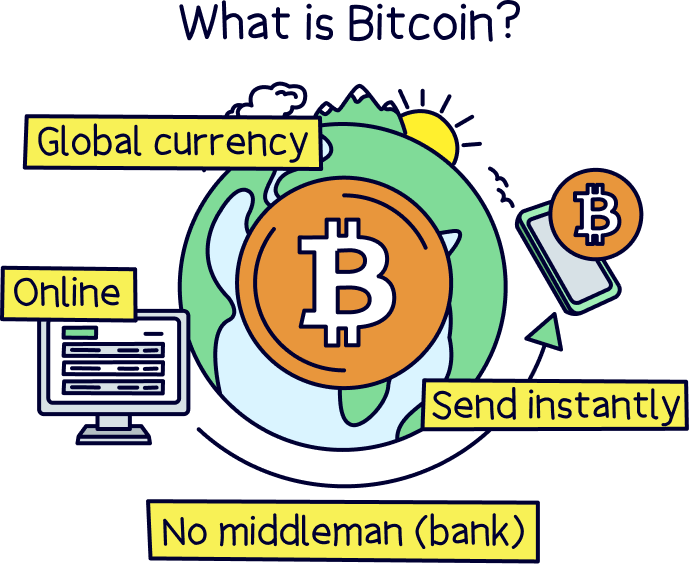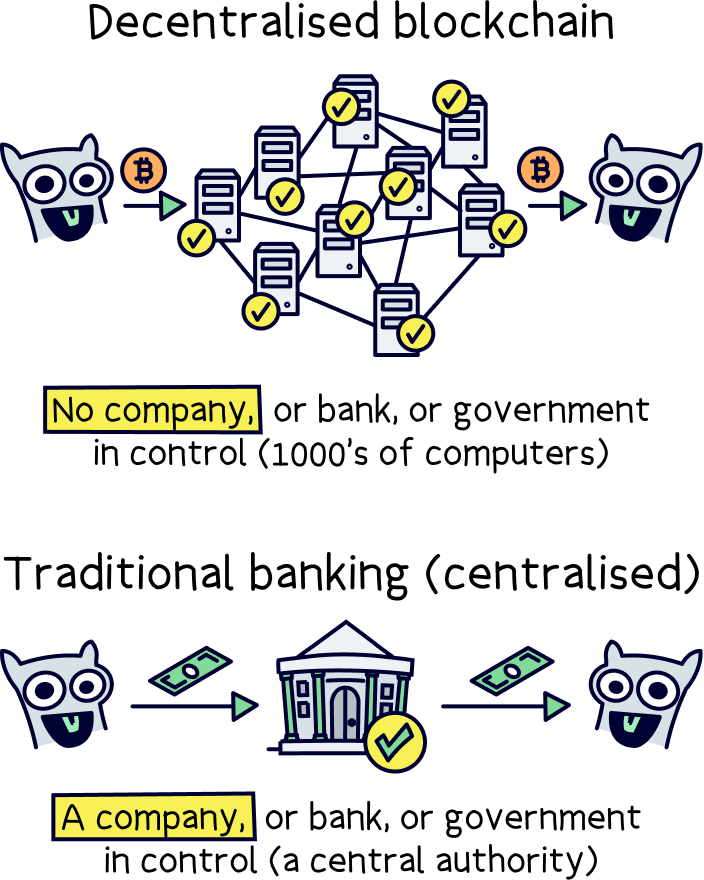
Article contents

Think of a blockchain as a database that can never be altered – only new information can be added to it – and it’s available for everyone to use, wherever they are in the world, and everyone can see the information. It’s game changing technology.
You can’t have the breakthrough technology of the century without it being complicated! Here’s what a blockchain is in a (hopefully) understandable way. Think of it as blockchain for dummies…
A blockchain is a computer system that stores data (information) in a way that’s permanent, in a fixed order, and it can never be changed – using technology that makes it impossible to cheat or hack.

It sounds simple right? The genius is behind how the data is written and stored that makes it globally accessible and can never be altered. Which makes it the perfect foundation for even more technology new be built on top of – for instance sending money to another person or company.
Traditionally, if you send money through a bank, you are using their own records, who then have to speak to other banks and adjust their records, and multiple payment records with other companies along the way (like VISA and Mastercard).
This means it's a long complicated process with a bank, and none of the records are public – a bank could make an error or adjust their records about the payment however they like. Plus, everyone in the payment process takes a piece of the pie (for example, VISA, foreign exchange fees etc.).

With a blockchain, it’s one simple record of transactions that everyone can access. And, everyone can make a transaction 24/7 (such as sending money directly to a friend).
This is the beauty of bitcoin – the technology that developed the blockchain concept. On the Bitcoin blockchain, the transactions (payments) go straight to the other person (called peer-to-peer), there's no middleman, so it’s faster, safer and cheaper too.

Technically, this method of storing information is called a ledger – and all the transactions are written onto it. And then shared across the blockchain network for everyone else to see. So it becomes a distributed ledger (and a digital ledger as it’s online).
With a blockchain, all of the transactions that happen at a similar time are grouped together into a small little record called a block, and this block is then added to a long chain of blocks – and that’s how we get the name blockchain.
A blockchain normally runs globally in a decentralised way – which means there is no single company, or bank, or even a government, controlling the data and the records, and what’s added to the blockchain.
There are lots of different computers across the world (a network) that process all the transactions when they are made. These are sometimes called nodes (or miners in the case of Bitcoin).
If something was centralised (the opposite to decentralised), there would be someone who owns and controls it (a central authority), such as a company. For instance, Google owns all of their computer systems and servers, and they could stop transactions from happening, delete your account or even shut down Google! With a decentralised system, no one owns it, it runs by itself, and cannot be switched off or records changed.

Therefore there is no need to trust a company (or even a government) to say what transactions are true, the blockchain is the truth.
There’s 2 different types of blockchain, a public blockchain and private blockchain. What we’ve described above, which is a globally accessible blockchain, is a public blockchain. Anyone can make transactions on the network (such as bitcoin payments), and anyone can read the transactions.
With a private blockchain, a central authority does control it (such as a company), and only they can read and make (add) transactions. They are using blockchain technology for themselves to create services that they own and control, rather than using a public blockchain where the information is public. This is a great way for companies to have one source of truth, and less mistakes will happen.
We’ve touched on Bitcoin, and that’s the original blockchain (digital currency) that created the technology. But second in line, there's Ethereum, which is a hugely popular blockchain network intended to be the foundation for services and applications to run on top of that aren’t necessarily for online payments.
The Ethereum network is intended to provide computing power to applications (apps) and services that anyone can build, distribute and use (these are called smart contracts).
It’s similar to cloud computing, where you rent server space on the internet for software to run on, save photos and store anything you like. You might not know it, but currently there’s lots of financial services applications running on ethereum, and lots of games are being developed. And in the future, who knows?!
Here's a few more of the biggest blockchains: Solana, Avalanche and Cosmos. We won’t go into them now, but worth checking out if you’d like to learn more about the different types of blockchains.
We hope that wasn’t too confusing! Just think of a blockchain as a database that can never be changed or altered, only new transactions can be added to it. Everyone can read it, and everyone can use it (unless it’s a private blockchain).
In reality, you’ll never actually need to understand blockchain technology, you’ll just use the services that run on it, and probably won’t even realise it’s using a blockchain platform! Just like the internet, do you really know how that works?
Blockchains are really promising technology, and we can’t wait to see what will happen in the future, we're geeking out about it!
Oh, and if you’re looking to invest in crypto, here’s how to buy bitcoin and how to buy ethereum. Finally, here’s the best crypto exchanges.
eToro is easy to use and super popular. Great for beginners to advanced traders.
eToro is easy to use and super popular. Great for beginners to advanced traders.
eToro is easy to use and super popular. Great for beginners to advanced traders.
eToro is easy to use and super popular. Great for beginners to advanced traders.
We’d love to hear from you, and it will help others too.
eToro is easy to use and super popular. Great for beginners to advanced traders.